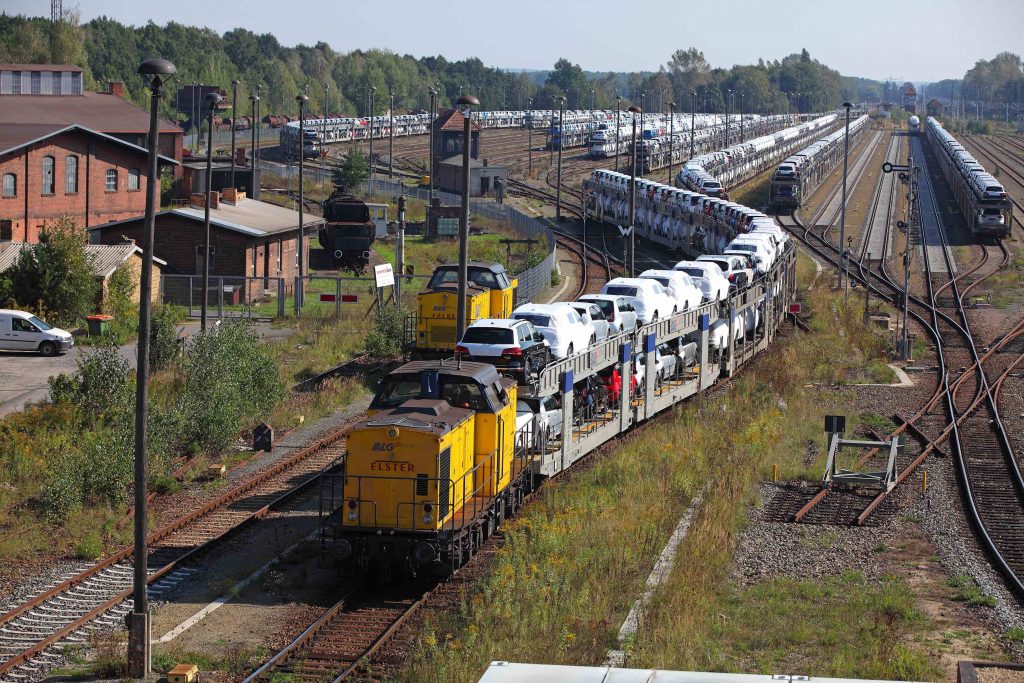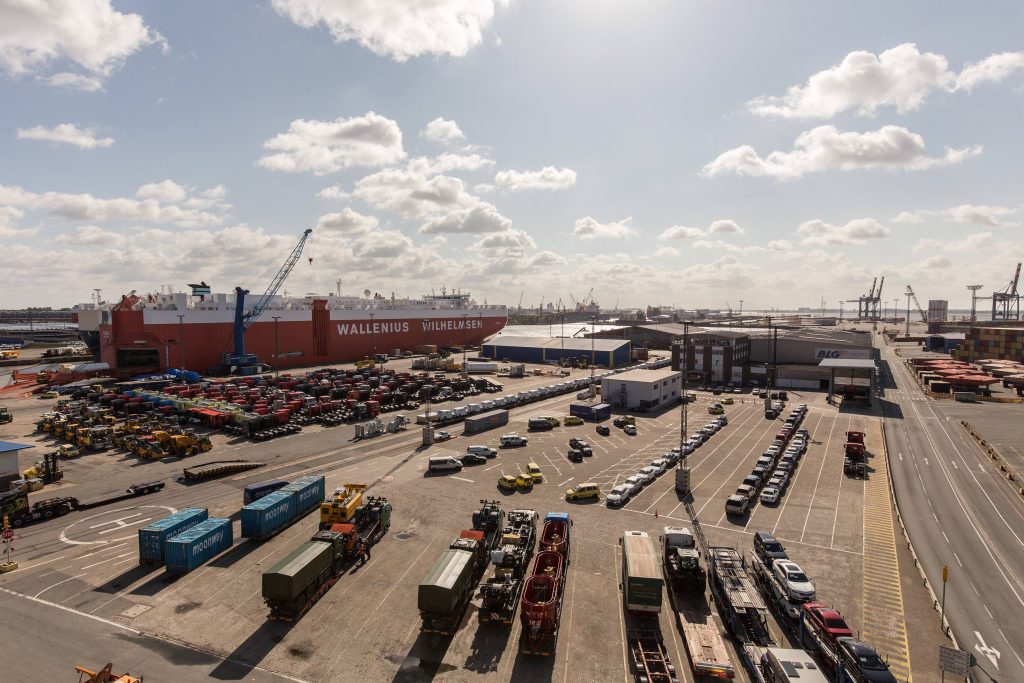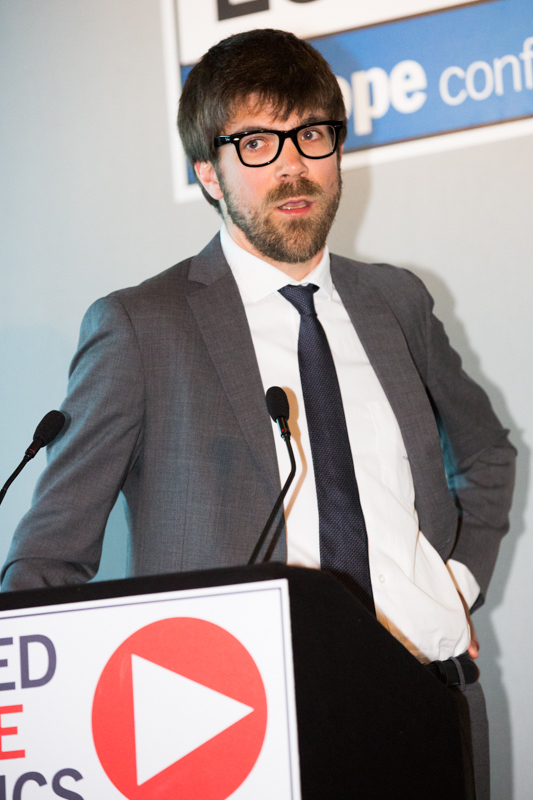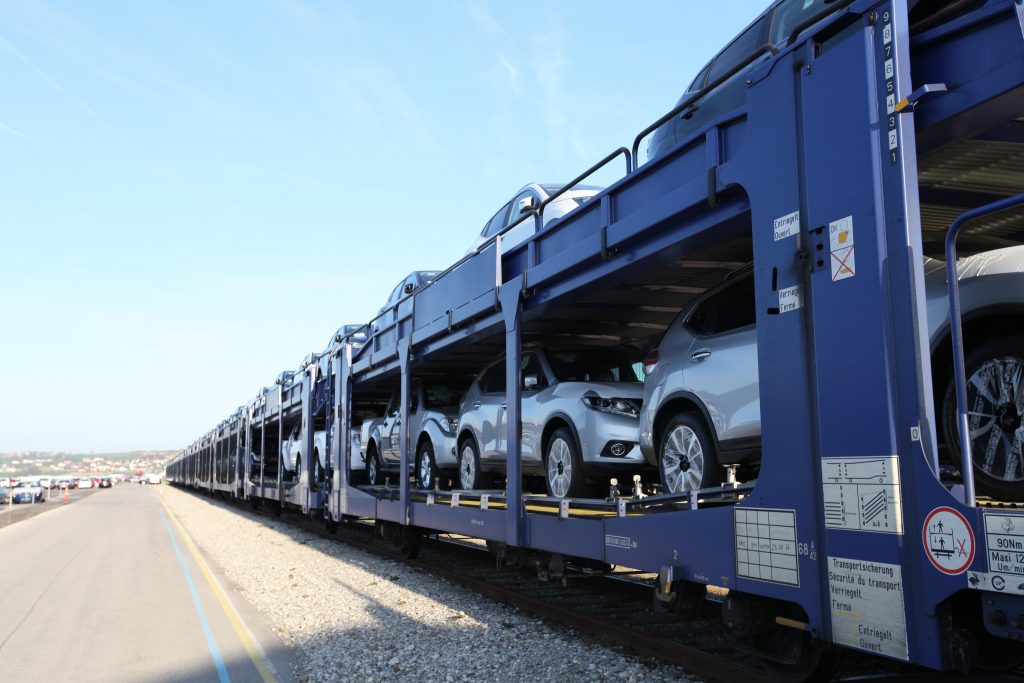 Some progress has been made in improving cross-border European rail flows, but economic and regulatory difficulties persist, with state-owned operators still the strongest competitors.
Some progress has been made in improving cross-border European rail flows, but economic and regulatory difficulties persist, with state-owned operators still the strongest competitors.
A good starting point for any discussion on the development of European rail networks over the past decade and into the next one is the question of liberalisation. The ‘Fourth Railway Package’, currently making its way through the European Commission, the EU’s legislative branch, has the aim of removing the remaining barriers to a single European rail area, and promises to further open up rail competition between countries and operators. If successful, it could promote intermodality, ease cross-border connections and help remove bottlenecks.
In this story
Or, it could do none of that because of the inherent problems in moving freight across European countries, each of which has its own loading practices, track and structure gauges, and bureaucratic hindrances.
According to Wolfgang Göbel, division manager for sales and logistics at German transport and logistics company Horst Mosolf, and vice-president of the Association of European Vehicle Logistics (ECG), the Fourth Railway Package will have no impact for automotive precisely because issues in the freight rail sector are operational and depend on the rules and regulations governing the different countries.
“I don’t see any direct impact,” says Göbel, who believes more critical operations issues remain, including a shortage of engine drivers and the switching of drivers and engines at international borders, something that have made long international flows very difficult.
“In Belgium the driver needs to have knowledge of the track and has to prove that he knows the way,” observes Göbel. “This leads to bottlenecks, one of the key problems.”
Others believe the prospect of future rail liberalisation is unlikely to prevent some state-owned giants from gaining further strength in their home markets or abroad. “Unfortunately, we are looking at regressive development in this field,” says Oliver Fabian, sales director at BLG AutoRail, which provides rail services for volume vehicle movements across Europe. “Powerful private rail service providers are swallowed up the by the former ‘state rail’ companies.”

However, while expectations may be mixed for what will come in the latest package, many agree that the past 10-15 years have nevertheless marked progress in rail reform and liberalisation in at least some parts of the European Union, much of it with impact for vehicle logistics. A series of reforms that began in 2001 have gradually made it easier for a diversity of companies to own and schedule automotive rail wagons (railcars), and also to operate private traction, circumventing state-owned rail companies. Companies such as BLG, ARS Altmann and Gefco have all expanded in such areas to help extend their networks. They have also invested in new kinds of equipment, such as flexible decks and closed wagons. In the meantime, state operators like Germany’s DB Schenker or France’s STVA (owned by the French railways, SNCF) have used liberalisation to expand their scope and fleets across other European markets.
This investment and competition has benefitted some carmakers. Firstly, the growth of production and exports in regions like Slovakia and Hungary have prompted the need for robust rail links and flows to western Europe or to ports of export. However, equipment and network flexibility has also been a boon, mainly for German carmakers. Volkswagen Group’s Andrea Eck points to the use of equipment that helps optimise upper and lower deck loading, as well as hubs the carmaker has recently implemented to combine volumes out of plants and allow for better rail combinations. Daimler has also been implementing new rail hub concepts, including one in Bremen (run by DB Schenker) and another close to Stuttgart, that have increased rail use and equipment utilisation. Mathias Wellbrock at BMW, meanwhile, lauds the advantages of using Altmann’s covered rail wagons over the past decade.
At the same time, difficulties across European economies and their automotive industries have led to a decidedly mixed result for automotive rail over the past decade. Even as some companies have expanded their fleets and operations in central Europe, rail usage and wagon fleets have stagnated or declined elsewhere, including across Benelux and in southern Europe. In France, light vehicle production is lower by about 45% today compared to 2005; meanwhile, there has been, at least until recently, much less application of rail liberalisation in the country, say some experts.
“In a couple of countries liberalisation brought more competition, which is equivalent to more flexibility, but still some countries barely show progress at all,” says Oliver Fabian. “France, for instance, has great potential slumbering within it – it is only the rail service providers [needed] to meet the demands of the automotive industry that are missing.”
A lack of infrastructure investment in western Europe also appears to have held back rail growth, with capacity issues as well as the need for modernisation for power, switches and other technical changes. Strikes and disruptions also remain common – not just in France or Belgium but also recently in Germany, where the GDL train drivers union has held eight strikes in the past two years, often bringing passenger and freight movements to a standstill.

Aside from the prospects (or lack thereof) for network improvements across Europe as a result of the latest railway package, many in the vehicle logistics sector support most past and current efforts at rail liberalisation and see them as a positive for realising rail’s potential over the next decade. Dr Maximilian Altmann, chief executive officer of German transport provider, ARS Altmann, says the signs are positive for ongoing reform, with a clear intention from the regulators in the EU to open up the market.
“This will result in increased competition for the railway industry, also more flexibility, which was and still is a big challenge,” says Altmann. “This further strengthens the need for new and innovative solutions from the key players.”
Since its main competitors for finished vehicle logistics services are the big, state-owned companies such as DB Schenker and STVA, gaining the ability to power its rail services has been critical for ARS Altmann. The company uses its own private traction almost exclusively.
“You can imagine that a strong focus on private traction was the only way to put our assets into service,” says Altmann.
He points to improved flexibility as a result of running its own traction, including the ability to combine different volumes and flows in a multi-directional network. Liberalisation has also helped ARS Altmann to develop alternative routing using abandoned rail infrastructure, including old shunting stations and rail sidings.
Altmann thinks regulators now need to intensify their efforts on cross-border vehicle movements by abolishing minor barriers. “Customs and documentation constraints that still exist should be eliminated as much as possible,” says Altmann. “I think with the harmonisation already mentioned and with a kind of common language in Europe for rail transport systems, there would be a huge improvement.
“Regarding the wagon equipment, it would be also good to see some easier procedures to get the equipment approved to be used in different countries in Europe,” he says.

ARS Altmann celebrates its 40th anniversary this year and claims to be the biggest private operator of car carrier wagons in Europe, with more than 2,500 units, of which 1,100 are the fully covered type and around 1,400 are open wagons. The majority of its wagons are double-deck but it also has a proportion of flatbeds. Ten years ago the company had about 1,000, mostly open units.
Investments in its fleet, which runs into the hundreds of millions of euros, according to Altmann, is down to having “very reliable financial partners” and carmakers being willing to make long-term commitments.
“We are just getting closer to the end of a project for additional fully covered railway wagons and quite a big series of completely new open wagons, not to speak about the refurbishment and the re-engineering of 400 older open wagons,” says Altmann.
Last year, the company moved around 3.5m vehicles, with 1.5m cars going by rail and a little fewer than 1.3m moved by road, with customers that include all the major European-based carmakers, as well as car rental and leasing companies.
Another provider that has made significant rail investments over the past decade is BLG AutoRail. From launching its fleet in 2008, today the company has almost 1,300 car-carrying wagons at its disposal and Oliver Fabian says further investments will go ahead once positive signs are sent from its customers, which include the Volkswagen Group, Renault Nissan and Hyundai Glovis (for Hyundai-Kia).
Other important private operators of automotive rail wagons in Europe include Gefco (which has around 3,000 wagons), Hödlmayr International and Mosolf. Mosolf had around 70 wagons ten years ago, according to ECG data. By 2014, that had grown to 300.
However, state operators are still the biggest players. DB Schenker moved around 3m vehicles last year, a figure it expects to beat in 2015. Taking DB Schenker Rail and DB Schenker Logistics business units together, automotive revenue last year was around Ä2 billion ($2.26 billion). The company has a rail reach that includes not only Germany and its connections, but also further afield through its acquisition of major rail players in the UK and Spain, for example. It also runs services connecting Germany to China.
DB Schenker Rail Automotive has a fleet of about 13,000 wagons dedicated to automotive both inbound and outbound. Of that, around 6,500 wagons are for vehicle transport, including flexible and fixed double-deck wagons, covered wagons and those specially designed for taller vehicles.
STVA, owned by France’s SNCF, has a fleet of 2,700 dedicated rail wagons on which it moves 850,000 vehicles a year on the European continent, the UK and North Africa (the fleet is down from 3,200 in 2005, according to data from ECG annual surveys). In Morocco, the company has designed and developed customised wagons to take Renault vehicles made in the country from the factory to Tangier Med port.

While certain factors have held back development for automotive rail services in Europe, it is is not necessarily to do with a lack of interest from the automotive sector. Oliver Fabian points to interest across Europe for long-distance flows and connections to ports. Wolfgang Göbel observes that block trains carry the equivalent of 32 trucks, and are a big advantage for large, standard flows (such as to ports for export). With less space available to store and stage vehicles today compared to a decade ago, rail can be an attractive option for moving volume in an economical way.
Carmakers have also become more sensitive to environmental legislation in every part of the vehicle-making process, including logistics. “Rail prevails where there is a strong focus on environmental issues and this is a general trend,” says Altmann. “Rail is a strong CO2 and noise reducer.”
However, some factors have also worked against rail transport. The fragmentation of flows in some cases, and decline in markets like southern Europe, have led to rises in empty backhauls and thus higher overall running costs. In a time of quick-changing demand and volatile market swings, rail’s relative inflexibility has also been an issue.
OEM executives are further concerned about vehicle sizes and rail equipment. Dr Ulrich Wieland from the BMW Group highlights how some of the carmaker’s vehicles are already too wide to fit into standard wagons – he worries about a lack of equipment to meet future vehicle designs.
However, wagon design has been a major focus for automotive rail providers, including for energy efficiency as well as for accommodating the changing shape of vehicles over the last decade.
“We have invested in a prototype of a new wagon with the capability to lower both wagon decks once loaded,” says BLG’s Fabian. “This enables double-deck transportation of 12 SUVs through a G1 (Germany) structure gauge profile.”
DB Schenker has also been investing in more flexible equipment. “We sense high demand for height-adjustable and covered wagons, and have invested accordingly,” says a spokesperson at the company’s headquarters. “We clearly face challenges like the ‘SUV boom’, the increase of vehicle dimensions and the diversification of models. This results in a high demand for height adjustable wagons.”
The spokesperson acknowledges a rising need for inter-operable wagon fleets and new compounds, but notes that they also bring an increase in unbalanced transport flows. “Furthermore, we have to cope with more and more volatile output and a stronger focus from our clients on lowering lead times,” he says.
There are also factors related to noise pollution for trains moving through urban areas. Fabian highlights wagons at BLG with wider loading decks, more ergonomic wheel chokes and so-called ‘whispering brakes’.
One of the most important developments at ARS Altmann over the last decade, meanwhile, has been its proprietary covered rail wagon, which has become a strategic part of BMW’s European and export logistics. One advantage of such equipment is the savings available on protection, according to Maximilian Altmann.
“You simply do not need transport protection on the cars,” he says. “You can save all the effort and money to implement, to remove and to recycle the transport protection. Our biggest customer had recognised this for a while and took the competitive advantage to use our closed wagons.”
Most recently, the company has also developed a lightweight open wagon with a high loading factor, of which the company will build 550 over the next couple of years.

While some companies have invested heavily across the network, other providers note something of a capacity shortage for European rail, especially as the economy recovers.
“We are facing a real capacity constraint,” admits Wolfgang Göbel. “We forecast that this will continue, this is not just a couple of months with higher volume. We see this in export and in the domestic market.”
Some of the capacity problems stem from the economic crisis after 2008, which led to an overall reduction in equipment for moving vehicles, and in some cases a shift in transport mode among carmakers.
“Some of the rail traffic streams broke away and have still not completely recovered by now,” says Oliver Fabian. “Others could have been built up instead, but the rail transport business for finished vehicles has not been capable of reaching its former strengths.”
According to experts, infrastructure in western Europe has not always been able to keep pace, though the cost of using it has been on the rise. For Fabian, a lack of investment by the public and private sector has contributed to constantly rising costs, which hampers rail’s competition with road. Investment in rail infrastructure is “dearly awaited” across the network,
he says.
ARS Altmann has not seen any improvements over the last decade either, with the same challenges to infrastructure a decade ago showing no signs of going away. “The network should be modernised in quite a few regions, there are various important lines that are still not electrified and bottlenecks towards the harbours that are still single lane tracks,” says Maximilian Altmann.

It is difficult to see whether the next decade will bring improvements to automotive rail. With governments still strapped for cash, a surge in public infrastructure investment seems unlikely. Meanwhile, it is unclear the extent to which further legislation will address the barriers and capacity issues that continue to impact the sector.
However, rail providers express hope for improvements that can make a real difference. They agree that investment in infrastructure needs to be directed toward new hubs and lines so that there are more alternative routes to take the burden off the main lines and perhaps run longer trains. They want to see increases in standard train lengths, and other operational improvements. And they want see more barriers removed.
Operators also call for more cooperation across the industry to help improve rail transport. Carmakers, their rail providers and those running the infrastructure need to learn how to work together to build trust and lasting relationships if rail is to regain momentum. “The precondition, of course, is the willingness of the investment and reliable cooperation between customers, infrastructure and service providers at the same degree,” says Fabian.
“Longer-term thinking [and] longer-term commitments would give the LSPs the opportunity to build-up ecologically sensible solutions, such as we did together with our biggest customer some years ago,” concludes Altmann. “This is really an old and maybe a bit of a boring story, but I think we really need to create win-win situations.”
For logistics providers and their OEM customers, the movement of vehicles by rail in Europe has as many pros as it has cons, including lower costs per vehicle and environmental benefits. However, securing uninterrupted transport across the region is one of the biggest challenges facing the sector – and it basically always has been. Differences in technical specifications have been among the most complex parts of the European rail network ever since it branched out across the continent from the UK in the 19th century.
Along the way, each country developed its own system and infrastructure, with a variety of electrification systems and traffic directions, as well as different loading, track and structure gauges. Effectively, it means the same rolling stock can often not be used to move cargo across borders.
For uninterrupted passage between EU countries, operators either have to change locomotives, which is costly and time consuming, or equip the locomotive with units that allow them to switch between various electrification systems. There are also more than 20 incompatible train protection systems – designed to ensure safer operations – used across Europe today.
According to BLG’S Oliver Fabian, the result is often long processing times and a significant lack of flexibility. He points in particular to France, but also to problems in the Benelux region and Italy. “They are sad examples of almost impossible rail business performance in spite of persistent demand and business potential,” he says.
Bureaucracy is another hurdle to overcome. For example, technical specifications for interoperability (TSI) are a particular burden. According to the European Rail Agency, the first set of such specifications related to infrastructure, energy, rolling stock, control-command and signalling, maintenance, and operation. They were prepared by the European Association for Railway Interoperability and adopted in 2002 for the trans-European high-speed rail system, to be subsequently revised in 2008. TSI was set up to offer a common standard for technical solutions. It turned out to be a “bureaucratic monster”, says Maximilian Altmann, which caused huge problems during the certification and registration of wagons.
However, Altmann maintains that operators have generally learned to overcome the technical boundaries, whether differing gauges or traffic directions. In many ways, the non-physical borders are most problematic. “What is more relevant for our operation and what, in our opinion, should be at the centre of the European discussion, is a series of numerous but insignificant national regulations that do not allow efficient transport management,” he says.
Altmann provides a few examples such as the different regulations concerning the backlight of trains in the European network, the minimum number of locomotive drivers present on the train, and minor differences in train security systems between some European countries.
“Imagine what the outcome of such differences can be in international transport,” he suggests.

























![Global[1]](https://d3n5uof8vony13.cloudfront.net/Pictures/web/a/d/s/global1_726550.svgz)









